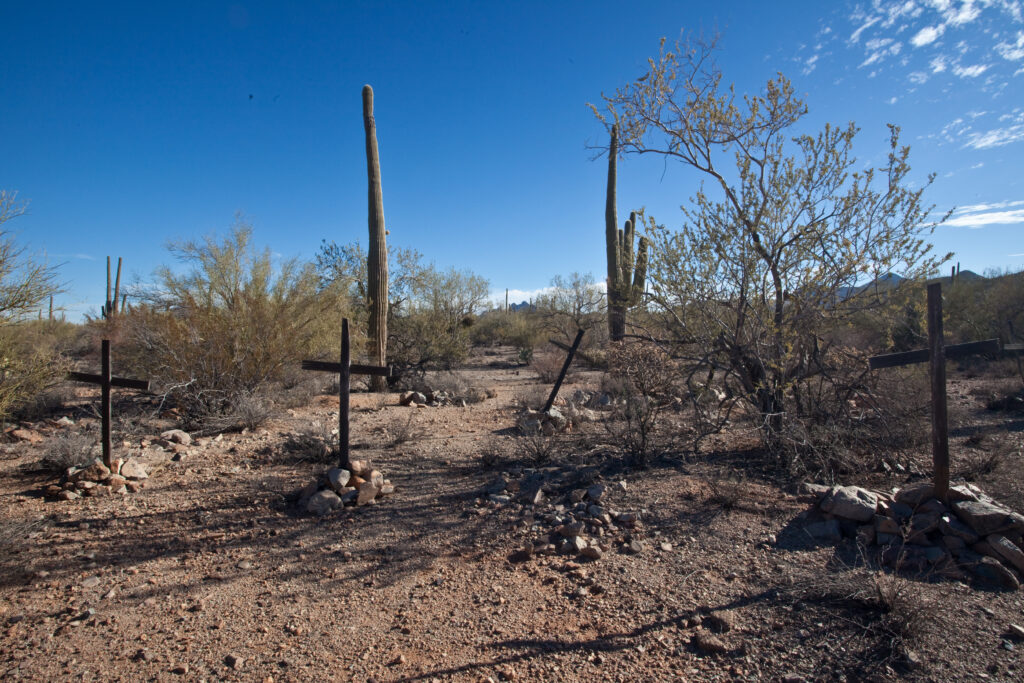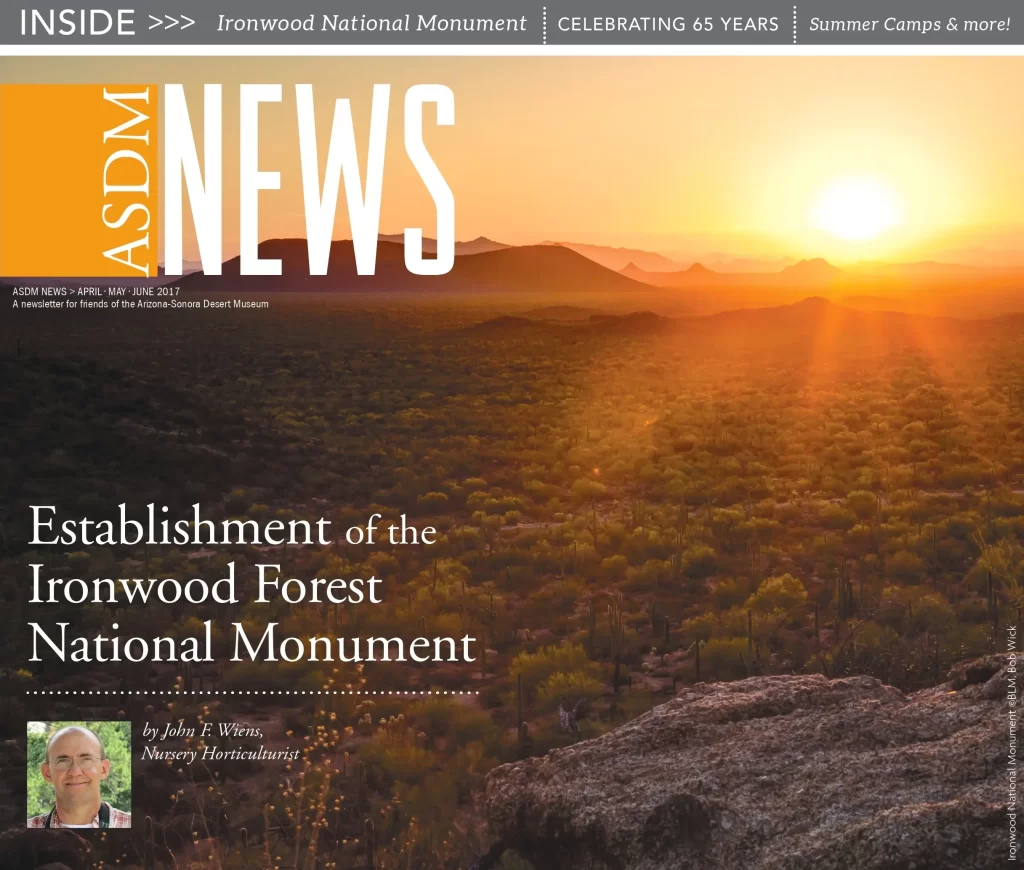History
Early History
The Monument contains evidence from campsites to villages occupied by ancient hunter-gatherers, the Hohokam, and the Tohono O’odham. There also are remnants of a small mission constructed in the late 1700s by Tohono O’odham laborers for Spanish Franciscan friars, and remnants of mining camps and cemeteries dating to the 1800s. There are three historic properties that have been placed on the National Register of Historic Places. They are the Los Robles Archaeological District, Cocoraque Butte Archaeological District, and the Santa Ana de Cuiquiburitac Mission site. Surveys within the IFNM have recorded 343 archaeological and historical sites, but the survey data suggests that there may be as many as 3,000 sites. Evidence of the Hohokam people dominates the archaeological record, with sites that include trash mounds, roasting pits, petroglyphs and numerous types of artifacts. The abundance of historical sites and artifacts is another reason for the preservation of IFNM, and it also provides further opportunities for education.
National Register of Historic Places
Three areas within the Ironwood Forest National Monument have been recognized as having special significance, prior to the designation of the area as a National Monument. These sites include the Los Robles Archaeological District, the Cocoraque Butte Archaeological District, and the Santa Ana de Cuiquiburitac Mission Site.
As with all archeological and historical resources, they are Monument objects and are protected by federal law. Do not touch, move, disturb or in any way alter the appearance or state of any of these irreplaceable treasures.
The mission located within Ironwood Forest National Monument, Santa Ana de Cuiquiburitac, was closely tied to the missions at San Xavier del Bac and Tumacacori. However, the location of Cuiquiburitac is barely discernible, save a few stones marking the outline of its foundation. For a more historical perspective of this mission, the Friends received permission to publish the following article.
Santa Ana de Cuiquiburitac: Pimeria Alta’s Northernmost Mission – Bernard L. Fontana
Originally published in the Journal of the Southwest, Vol. 29, No. 2, Summer 1987, Copyright by the Arizona Board of Regents. Edited by Joseph C. Wilder.
Article reprinted with permission from Journal of the Southwest, University of Arizona Press, The Southwest Center, Tucson.

The town of Silver Bell
Well before the monument was created, the historic mining town of Silver Bell flourished between 1903 and the 1930s. As many as 1,000 people lived in the town, which boasted mercantile stores, saloons, laundries, bakeries, a post office, a hospital, and a school. But this town was just part of the history of the area.
Read more about the town of Silver Bell here and the cemetery here.
The Proclamation Establishing Ironwood Forest National Monument
William J Clinton
June 9, 2000
By the President of the United States of America
The landscape of the Ironwood Forest National Monument is swathed with the rich, drought-adapted vegetation of the Sonoran Desert. The monument contains objects of scientific interest throughout its desert environment. Stands of ironwood, palo verde, and saguaro blanket the monument floor beneath the rugged mountain ranges, including the Silver Bell Mountains. Ragged Top Mountain is a biological and geological crown jewel…

Establishment of the Ironwood Forest National Monument
by John F. Wiens, courtesy of the Arizona-Sonora Desert Museum
ASDM News, April May June 2017
In the 19th and early 20th centuries, the Southwest frontier was viewed as a great resource for mining, grazing, and agriculture. Gradually attention was given to preservation of the Sonoran Desert landscape. Read more…
Historical Documents Related to Monument Establishment
Proposal in Support of the Ironwood Preserve
Proposal for the Establishment of the Morris K Udall Ironwood Forest – Upland Corridor National Monument
Pre Plan Analysis for the Ironwood Forest National Monument, February 2001
Natural History, Archaeology, and Cultures of Southern Arizona’s Ironwood Forest

